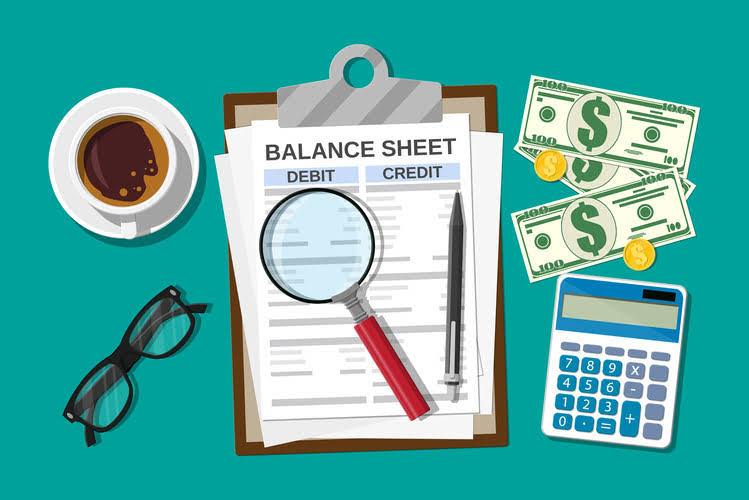Chưa có sản phẩm trong giỏ hàng.
Bookkeeping
How to account for liabilities

In accounting, operating expenses are recorded as liabilities until they are paid off. For example, wages payable are considered a liability as it represents the amount owed to employees for their work but not yet paid. Accrued Expenses are expenses that a company has incurred but not yet paid. These expenses are recorded in the income statement and the corresponding liability is reported in the balance sheet. Examples of accrued expenses include wages payable, interest payable, and rent expenses. It’s a long-term liability if a business takes out a mortgage that’s payable over a 15-year period but the mortgage payments that are due during the current year are the current portion of long-term debt.
How to account for liabilities

By analyzing the types, amounts, and trends of a company’s liabilities, it is possible to gauge its financial position, stability, and risk exposure. A company with too many liabilities compared to its assets may face cash flow problems or increased financial risk. Understanding a company’s liabilities can also help assess its ability to meet debt obligations and the potential for future growth. Managing liabilities is a crucial aspect of running a successful business. It involves anticipating future financial obligations and employing strategies to meet them while maintaining solvency.

Other Liabilities
- In every case, knowing what your liabilities are is a strong step in helping you better plan for your business’s future.
- Contingent liabilities are potential liabilities that depend on the outcome of future events.
- The dance between what we own and owe is the rhythm of enduring business success.
- A positive net worth indicates that a company has more assets than liabilities, while a negative net worth indicates that a company’s liabilities exceed its assets.
- The current/short-term liabilities are separated from long-term/non-current liabilities.
A financial accountant’s duties may differ from those of a self-employed accountant who works for many clients preparing their accounts, tax returns, and possibly auditing other companies. The former CEO of UBS North America denied that accounting liability he owes more than $4.7 million in penalties for his alleged failure over 11 years to report his interest in foreign bank accounts. Prepaid or annual subscriptions and memberships,or a service owed to you – their liability, your asset.
Current Liabilities: What They Are and How to Calculate Them
Current Liabilities – Obligations which are payable within 12 months or within the operating cycle of a business are known as current liabilities. They are short-term liabilities usually arisen out of business activities. Examples of current liabilities are trade creditors, bills payable, outstanding expenses, bank overdraft etc. A company may take on more debt to finance expenditures such as new equipment, facility expansions, or acquisitions. When a business borrows money, the obligations to repay the principal amount, as well as any interest accrued, are recorded on the balance sheet as liabilities.
- Long-term liabilities are any debts due more than one year in the future, while short-term liabilities are due within the year.
- Unlike the assets section, which consists of items considered cash outflows (“uses”), the liabilities section comprises items considered cash inflows (“sources”).
- Most companies will have these two-line items on their balance sheets because they’re part of ongoing current and long-term operations.
- Both the current and quick ratios help with the analysis of a company’s financial solvency and management of its current liabilities.
For example contingent liabilities can become current or long-term if realized. Liabilities in accounting are any debts your company owes to someone else, including small business loans, unpaid bills, and mortgage payments. If you made an agreement to pay a third party a sum of money at a later date, that is a liability.
Your accounting software should automatically add up all your liabilities for you. Otherwise, you will need to manually add your liabilities up in your spreadsheet or the software of your choice. Liability may also refer to the legal liability of a business or individual. Many businesses take out liability insurance in case a customer or employee sues them for negligence. Adam Hayes, Ph.D., CFA, is a financial writer with 15+ years Wall Street experience as a derivatives trader.
Liabilities vs. Expenses
This question can particularly help when considering accruals and deferrals or other less obvious items. Since SaaS businesses frequently have annual subscription options, this is an important aspect not to overlook. One of the most critical yet misunderstood components of this financial story is ‘liabilities’. While many entrepreneurs diligently track their revenue and assets, it’s equally crucial to understand the nuances of liabilities. Current liabilities are obligations due within 12 months or within an operating cycle. It is possible to have a negative liability, which arises when a company pays more than the amount of a liability, thereby theoretically creating an asset in the amount of the overpayment.






